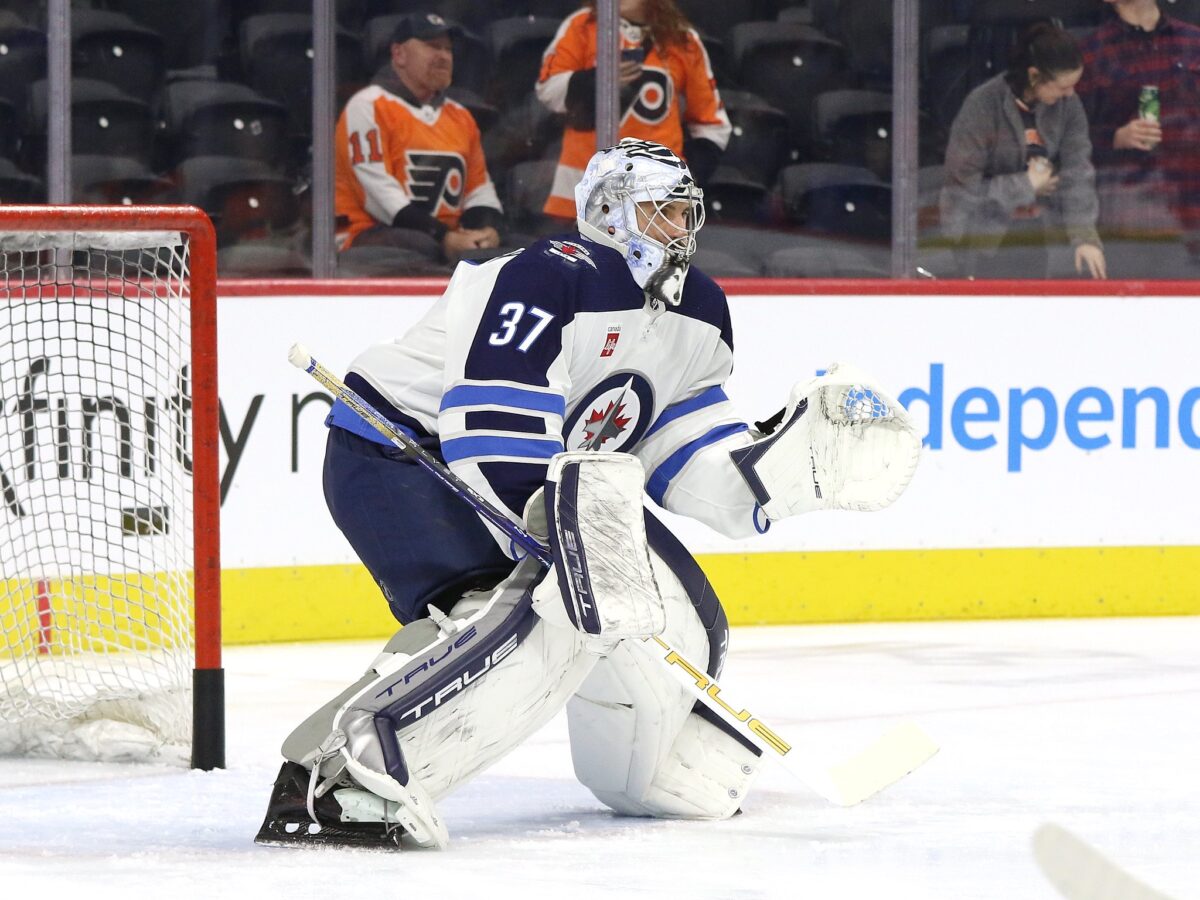Winnipeg Jets goaltender Connor Hellebuyck recently spoke out about the NHL’s inconsistent goaltender interference rules, particularly in response to a controversial call on Brandon Hagel’s goal against the Jets. Hellebuyck described the incident as a missed opportunity to enforce what he believes should have been a goaltender interference call, expressing frustration over how the league has handled such decisions.
Related: NHL Rumors: Oilers, Wild, Bruins
Over the past few years, Hellebuyck has actively sought to influence rule clarity on this issue, yet progress has been slow. Here’s a look at Hellebuyck’s insights and his concerns for the future of goaltender interference rules in the NHL.
“I’ve Tried to Help Make it Black and White”
Hellebuyck explained that he has advocated for clearer goaltender interference rules for years. He’s even brought video clips, charts, and bullet-pointed suggestions to the NHL Competition Committee meetings, where players, coaches, and general managers gather annually to discuss rule changes. Hellebuyck’s objective has been to establish clear, objective guidelines for what constitutes interference, which he believes would reduce controversy and help players adapt.
Related: Can the Jets Expect Logan Stanley to Ever Reach His Potential?
Despite his extensive efforts, he feels his proposals haven’t led to substantial change. According to Hellebuyck, the committee often prefers to maintain the status quo, even when he provides strong evidence for a more black-and-white approach to interference calls.
“Incidental Contact” or Goalie Interference?
One of Hellebuyck’s biggest frustrations revolves around the NHL’s definition of “incidental contact.” He argues that the term is applied too loosely, allowing goals that should be disallowed. Referring to Hagel’s recent goal, Hellebuyck noted how excessive contact went uncalled as the player drove him into the net. In Hellebuyck’s view, this kind of contact should not be dismissed as incidental. He believes the NHL needs firmer guidelines, where substantial interference with a goaltender should result in a no-goal ruling.

For Hellebuyck, the crux of the issue is that players should be able to distinguish between accidental contact with the goaltender and interference. He has even suggested specific ways the NHL could tighten its definitions to prevent these gray areas.
The NHL’s Competition Committee: Attempts and Pushback
Hellebuyck recounted one meeting where he presented a detailed proposal to the Competition Committee. He spent around 45 minutes walking the group through his ideas, backing his points with clips and a flowchart to make the rules more precise. However, he was met with resistance. Although his presentation sparked discussion, the committee ultimately decided not to take his suggestions forward. That experience left Hellebuyck with the impression that they weren’t willing to change the current interpretation of goaltender interference.
Related: Winnipeg Jets’ 5 Best-Case Scenarios for 2024-25
Hellebuyck acknowledged that some may view his efforts as biased since he is a goaltender. However, he argued that his intentions are focused on consistency and fairness across the league.
The Path Forward for Goaltender Interference Rules
In addition to wanting fair rulings for all, Hellebuyck noted that these controversial calls affect him personally. Allowing questionable goals doesn’t just impact his stats; it can alter the course of the game and affect his team’s momentum. Despite these frustrations, he credited his teammates for their resilience, stating they’ve continued to play hard and overcome setbacks.
Hellebuyck’s comments underscore an ongoing issue in the NHL. He believes there is a need for clarity in enforcing goaltender interference. Although his efforts haven’t yet yielded changes, his commitment to advocating for more definitive rules suggests that goaltenders across the league might benefit from his persistence in the long run. If the NHL eventually adopts more concrete guidelines, it could lead to fewer controversies and a more consistent standard for players and fans.
For now, Hellebuyck’s search for clarity reflects the broader struggle to balance tradition with the game’s evolution.
